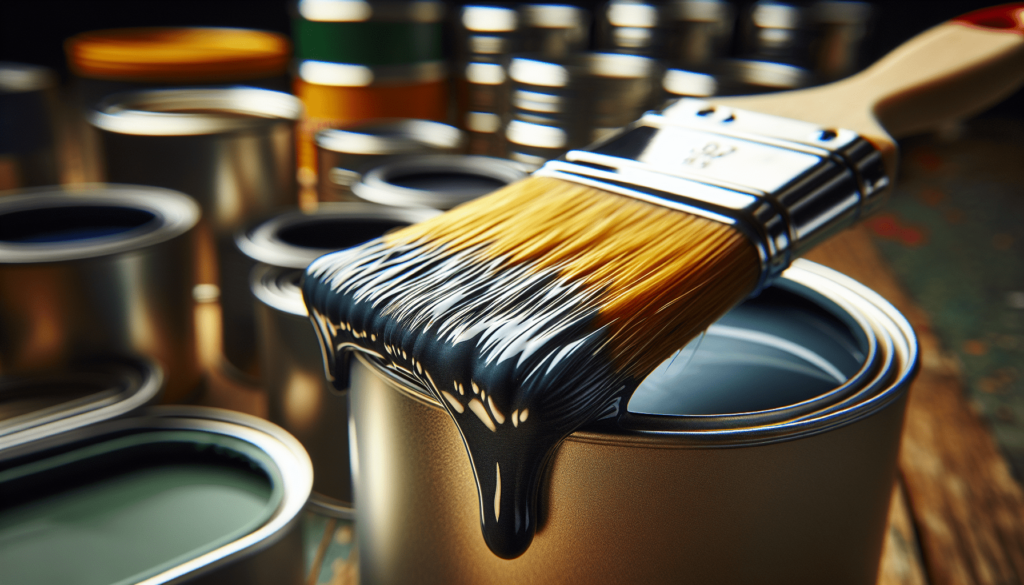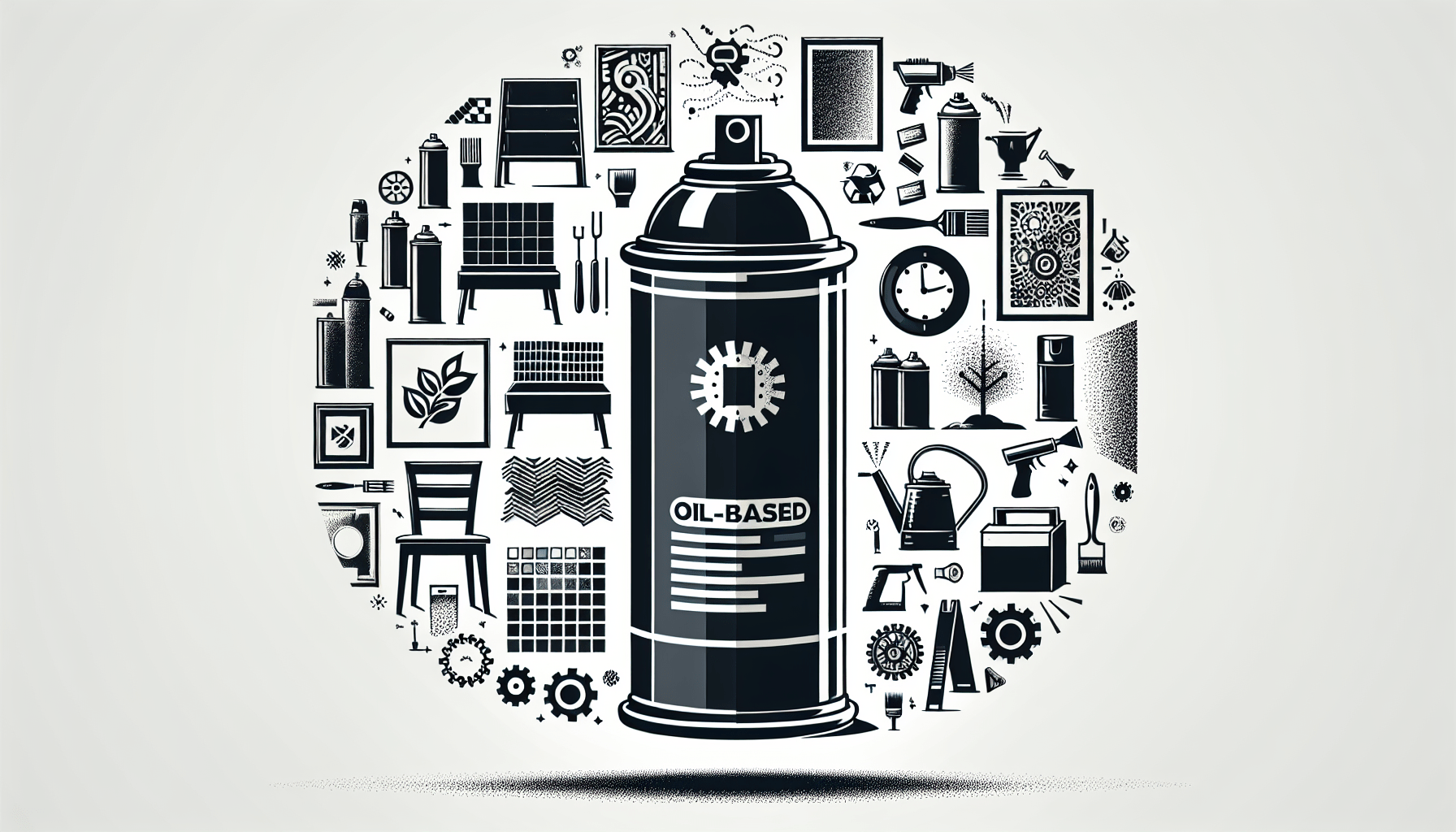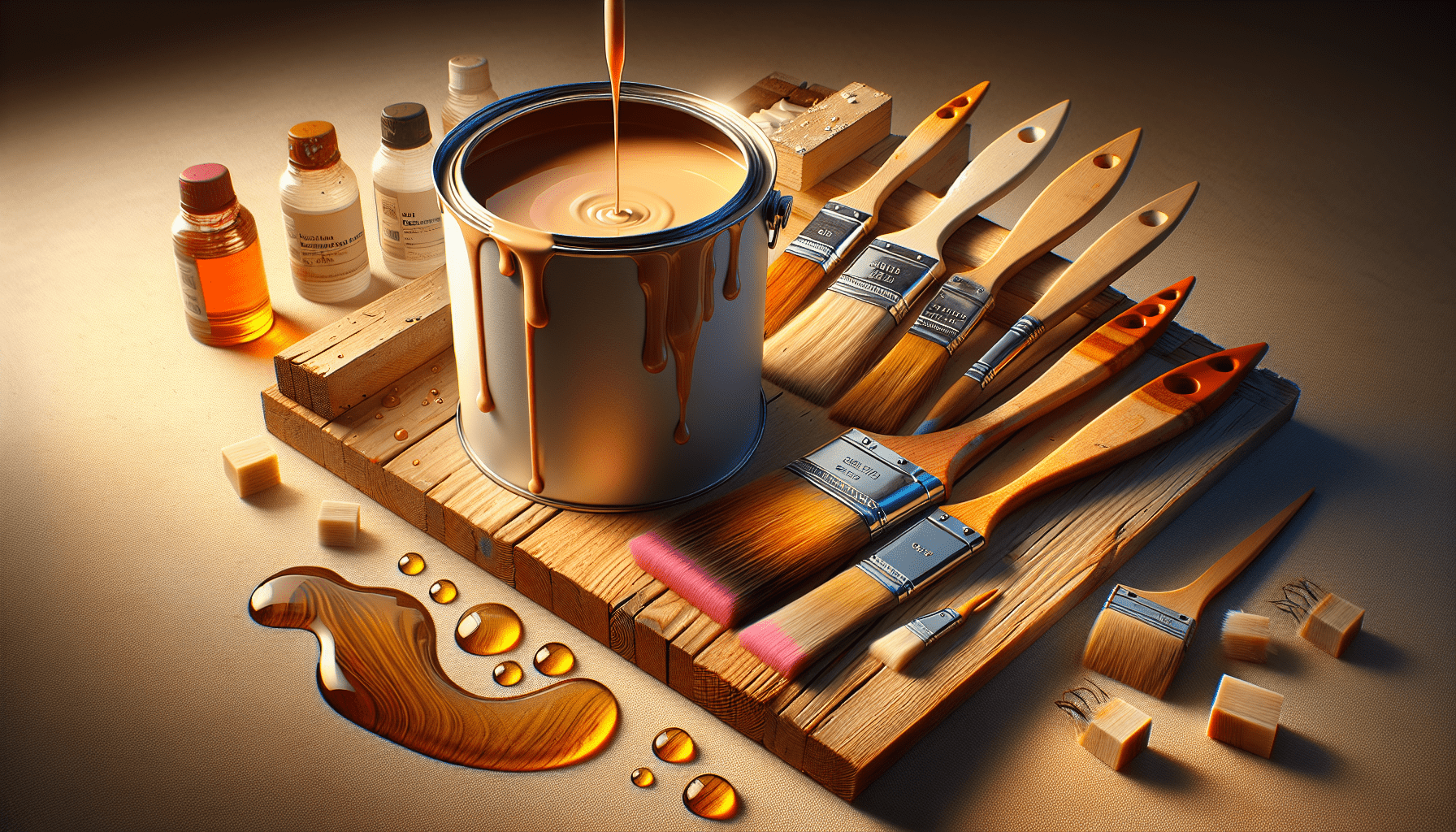In the ever-evolving world of paints and coatings, one may often wonder if epoxy paint is oil-based. This article sets out to demystify the composition of epoxy paint, shedding light on its characteristics and specifics. It offers you a clear understanding of its base component, ultimately answering the question if epoxy paint is actually derived from oil. Understanding such aspects will enormously aid you in making informed decisions when you embark on your painting project.

What is Epoxy Paint?
Epoxy paint is a type of paint that is known for its remarkable ability to resist wear and tear, making it a preferred paint choice for areas that face high traffic or harsh conditions.
Epoxy paint definition
This type of paint refers to the coating that results from two components, usually referred to as Part A and Part B. Part A is a resin and Part B is a hardener, which, when combined, undergo a chemical reaction to form a hard, solid surface.
Composition of epoxy paint
The primary components of epoxy paint, part A (resin) and part B (hardener), form a tough bond with each other when mixed. In addition to these two components, epoxy paint can also contain solvents, additional binders, and pigmentation.
Common uses of epoxy paint
Recognized for its durability and resistance to factors such as water, heat, and chemicals, epoxy paint is extensively used in industries for flooring and machinery. It is also frequently used to coat garage floors, swimming pools, and in marine applications due to its ability to withstand harsh conditions.
Different Types of Paint Bases
Understanding different bases of paints is crucial for choosing the right paint for your needs.
Overview of paint bases
Organizing paints into categories based on their base allows for better understanding of the properties, applications, and limitations of each type of paint. The common bases of paint include oil, water, latex, and epoxy.
Oil-based paint
Oil-based paint, as the name suggests, uses oil as its primary vehicle and can consist of natural oils like linseed or synthetic oils. It is known for its glossy and smooth finish, but it takes longer to dry compared to other paints.
Water-based paint
Water-based paints, also known as acrylic paints, use water as the carrier for the pigment and resins. They dry quickly and produce less odor when compared to oil-based paints.
Latex-based paint
Often mistaken to be different from water-based paints, latex paint is also a type of water-based paint but with the addition of latex as a binder. The advantage of latex paint is that it is more flexible and resistant to cracks.
Epoxy-based paint
Epoxy-based paint is a durable, high-performance paint that is resistant to damage and wearing. It is often used in applications where durability and resistance are essential, such as in industrial flooring, boats, and pools.
Characteristics of Oil-Based Paints
Knowing the unique properties and characteristics of oil-based paints can help you make an informed choice when selecting a paint for your project.
Definition of oil-based paint
Oil-based paint is a type of paint that uses an oil as its main vehicle of dispersion. The oil in oil-based paints can be a natural oil such as linseed oil, or a synthetic oil.
Composition of oil-based paint
An oil-based paint primarily consists of pigment, oil, and a solvent. Upon application, the solvent evaporates, leaving behind the oil and pigment which then dries into a hard, glossy surface.
Advantages and disadvantages of oil-based paint
The major advantage of oil-based paints is their durability and resistant nature. They also provide a beautifully smooth and glossy finished appearance. One major disadvantage, however, is they take longer to dry when compared to other types of paints. This could potentially extend the time required to complete painting projects.
Is Epoxy Paint Oil Based?
Understanding the differences between epoxy and oil-based paints can eliminate confusion and help you choose the right paint for your needs.
Distinguishing epoxy paint from oil-based paint
Epoxy and oil-based paints are distinct in their composition, function, and application. While both provide durable finishes, they achieve this through different means.
Epoxy paint composition
As earlier mentioned, epoxy paint consists of a resin (Part A) and a hardener (Part B). It does not contain oil as one of its primary components.
Differences between epoxy paint and oil-based paint
Epoxy paint and oil-based paint differ significantly in their composition, drying process, strengths and weaknesses. While oil-based paint can provide a glossy finish, it can fall short when it comes to resistance to factors such as chemicals, heat, and heavy traffic. On the other hand, epoxy paint excels in these areas. Epoxy paint also dries through a chemical reaction between its two components, resulting in a much harder and durable coat than oil-based paint.

Advantages of Epoxy Paint
There are numerous advantages associated with the use of epoxy paint.
Durability and resistance to damage
One of the most notable benefits of epoxy paint is its durability. Once cured, epoxy paint forms a hard, dense layer of protection resistant to damages including, impacts, stains, scratches, and more.
Chemical and moisture resistance
Epoxy paint’s impressive resistance to chemicals and moisture makes it an ideal choice for areas that battle these elements, such as garages, industrial floors, or pool decks.
Versatility and wide range of options
Epoxy paint is available in a variety of colors and finishes, offering flexibility in aesthetic choices while providing the benefits of its strong composition.
Easy to clean and maintain
Despite its tough structure, maintaining epoxy painted surfaces is incredibly easy. Regular cleaning with mild detergents can keep it looking brand new for years.
Applications of Epoxy Paint
Epoxy paint serves many purposes, working well on surfaces that require durability and resilience.
Industrial and commercial flooring
Epoxy paint is the go-to choice for many industrial and commercial setups. Its ability to withstand heavy traffic and resist spillages of chemicals or oil makes it a sound choice for such environments.
Garage floors
Homeowners often turn to epoxy paint to provide a resilient, easy-to-clean surface in their garages. It is resistant to oil, grease, and other car-related stains, making it the perfect choice for a garage floor.
Metal surfaces
When it comes to offering protection from rust and corrosion, few other paints perform as well as epoxy paint. This makes it highly suitable for coating metal surfaces.
Concrete surfaces
Epoxy paint’s bonding capabilities make it uniquely fitted to coat and seal concrete surfaces, providing a glossy, attractive finish that’s easy to maintain.
Wood surfaces
Although less common, epoxy paint can also serve as a strong, protective layer on wood surfaces, providing resistance to water, UV rays, and general wear and tear.
How to Apply Epoxy Paint?
While the application process of epoxy paint may seem straightforward, understanding each step’s purpose can help optimize the results.
Surface preparation
Preparation of the surface is fundamental for achieving strong adhesion and a flawless finish. This step involves cleaning the surface to eliminate dust, grease, or any existing coatings and repairing any cracks or holes.
Applying primer
Applying a primer before the epoxy paint can enhance the adhesion and the overall look of the finish.
Mixing and applying epoxy paint
The two components of the epoxy paint need to be mixed together just before application. Once mixed, a roller, sprayer, or brush can be used to apply the epoxy paint onto the surface.
Curing time and additional coats
After the application, the paint needs sufficient time to cure. Additional coats may be applied once the initial coat is dry.
Protective topcoat application
Finally, for enhanced durability and look, a protective topcoat can be applied.
Safety Considerations
Working with epoxy paint requires certain safety measures to optimize the painting process and avoid health risks.
Proper ventilation
As epoxy paint can emit fumes during and immediately after application, it’s necessary to ensure proper ventilation in the workspace during these stages.
Wearing protective clothing and equipment
Wearing protective clothing, including gloves, goggles, and a mask, protects you from potential skin irritations, eye injuries, and inhalation of volatile organic compounds.
Preventing skin contact
Epoxy paint can cause skin irritation. Hence, avoiding skin contact through the use of protective wear is recommended.
Hazardous waste disposal
Leftover paint and empty paint containers should be disposed of properly to prevent environmental damage.
Tips for Working with Epoxy Paint
Knowing a few tips and tricks can facilitate a smooth application process and a seamless finish.
Read and follow manufacturer instructions
Each epoxy paint product can have unique instructions regarding mixing and application. Reading and following these instructions can lead to optimal results.
Test the paint on a small area
Before applying the paint on a large scale, it’s a good idea to test it on a small, inconspicuous area, ensuring satisfaction with the color and finish.
Ensure the surface is clean and dry
Proper cleaning and drying of the surface prior to application ensure strong adhesion and an unblemished look.
Use recommended tools and techniques
The use of appropriate tools and techniques affects the application and end-result of the paint job.
Apply multiple thin coats
Applying several thin layers of epoxy paint can result in a stronger, more even finish than applying one thick layer.
Conclusion
In conclusion, it’s clear that epoxy paint is not oil-based, with its distinct characteristics and methods of drying and curing. Its numerous benefits, including durability, resistance to chemicals, and easy maintenance, make it a popular choice for various surfaces across residential, commercial, and industrial settings. However, like all paint products, it’s important to take proper safety precautions and follow manufacturer instructions precisely to enjoy the best results.



